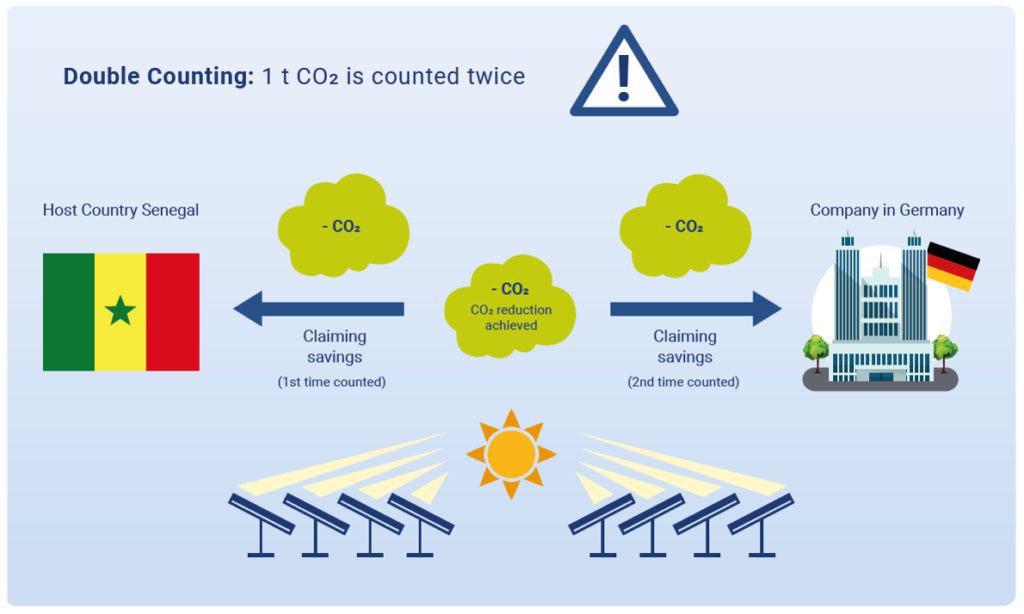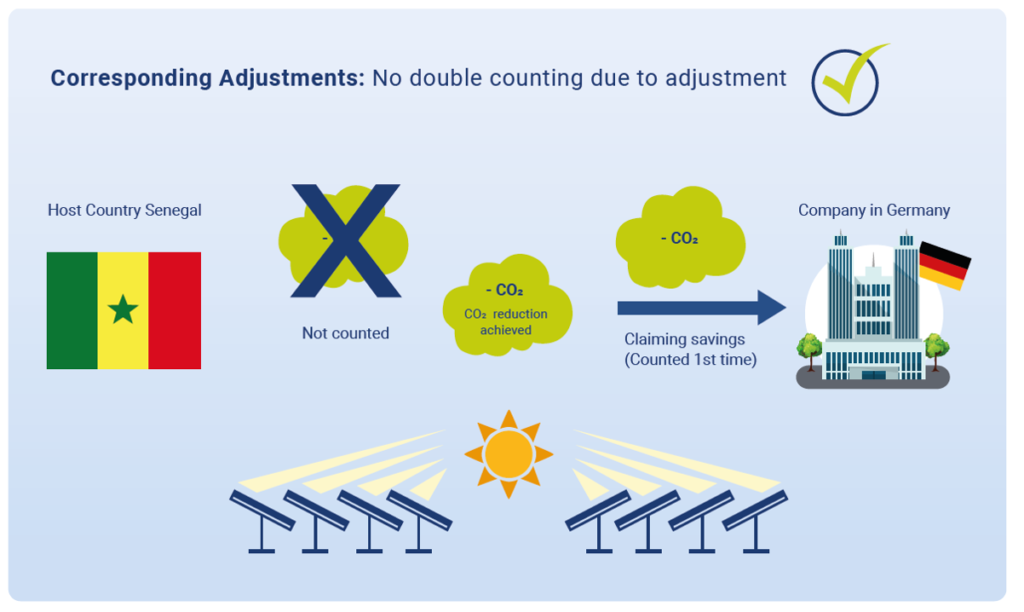Introduction: Changed framework conditions for offsetting under Paris
The Paris Climate Agreement poses new challenges for project operators and offset clients to ensure the integrity of offsets. Specifically, project operators and offset clients must take measures to prevent emission reductions achieved in climate protection projects from being counted twice.
1. Problem of double counting:

An example: If a German investor invests in a solar plant in Senegal that feeds electricity into the grid there, Senegal counts the tonnes of CO₂ saved as a result towards its targets in the energy sector. This is done automatically via Senegal’s CO₂ inventory, which records that the electricity in Senegal is now generated with less fossil fuels. There is no choice here for Senegal.
If the investor now wants to use the achieved emission reductions for offsetting, the emission reductions are claimed twice: By Senegal and by the foreign investor for his own emissions. This means that the investor has not effectively compensated. Project operators must therefore take action themselves and reach an agreement with the host countries of their projects.
2. Solution Corresponding Adjustments (CAs):

- Under the Kyoto Protocol, only industrialised and newly industrialising countries had binding quantitative reduction targets, while the countries of the Global South did not. Emission reductions achieved there in climate protection projects were therefore not recorded or claimed by the host countries of the projects.
- Under the Paris Climate Agreement, all Parties have binding mitigation targets. They set these and measures for implementation in their Nationally Determined Contributions (NDCs). Emission reductions achieved in climate protection projects, including those that project operators such as atmosfair use for voluntary offsetting, will in future (with possibly a few exceptions in an initial phase) be automatically recorded by the host countries and reported to the Parties as a contribution to achieving their targets set in the NDCs.
- The rules for offsetting in Article 6.4 of the Paris Climate Change Agreement adopted at COP26 in Glasgow stipulate, in order to avoid double counting, that host countries of climate protection projects report the emission reductions achieved in the projects that are to be used for offsetting and do not count them towards their reduction targets. This process is called Corresponding Adjustment (CA). Host countries decide whether and for which projects they make such CA. They issue a formal approval (Letter of Assurance and Authorisation “LoAA”) to projects for which they want to carry out CA, which allows the emission reductions achieved to be used abroad, e.g. for offsetting.
- Thus, offsetting is only possible with emission reductions for which the host countries issue CAs, from projects for which host countries issue LoAAs. Emission reductions for which no CAs are available cannot be used for offsetting. However, companies and private individuals who purchase certificates for emission reductions without CAs can still use them to contribute to climate protection and technology development in the host country. They acquire so-called ‘contribution claims’ because they have helped the host country to achieve its goals (contribution). Contribution claims help indirectly because they can promote technology, but their CO₂ reductions cannot be credited to the customer because the project country already takes these into account.
3. Conclusion: there are two new products
As a consequence of the previous sections, there are two new products from 2021:


 Share
Share Tweet
Tweet